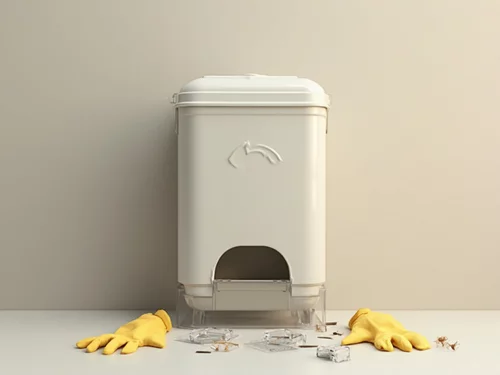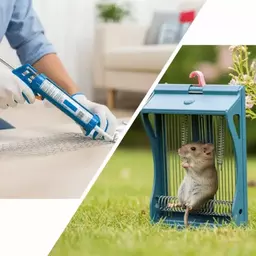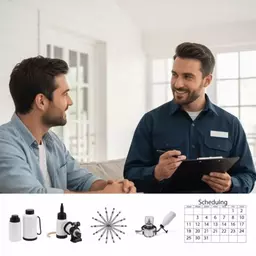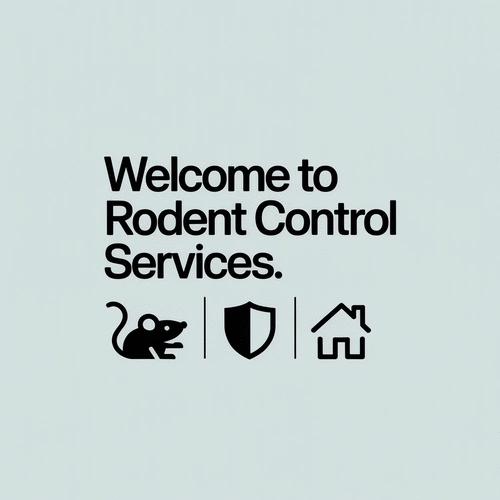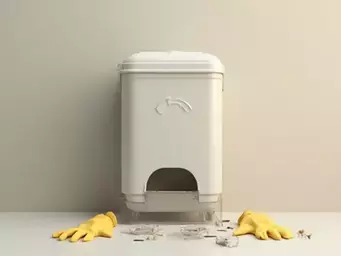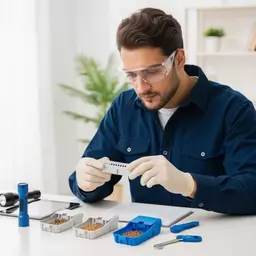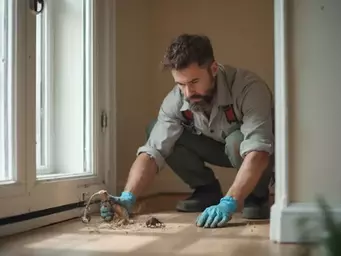What if the solution to your rodent problem was as simple as understanding the right tools for the job? Bait stations not only secure the bait but also create a safe environment for your family and pets. Let's uncover the essentials of effective rodent control through these powerful devices.
What You Will Learn
- Bait stations provide a secure method for rodent baiting while minimizing risks to children and pets.
- Key components of effective bait stations include tamper-resistant designs and durable, weather-resistant materials.
- Selecting the right type of bait—poisonous or non-toxic—can greatly enhance rodent control effectiveness.
- Compliance with EPA regulations and local laws is essential for safe and effective rodent control practices.
- Understanding the environmental impact of rodent control methods helps promote a healthier ecosystem.
Rodent Control: Bait Station Effectiveness and Legal Considerations
Understanding the key aspects of rodent control, from bait station components to legal compliance, ensures effective and safe pest management.
Bait Station Components
- ✓ Tamper-Resistant Design
- ✓ Durable Materials
- ✓ Easy Rodent Access
- ✓ Proper Size
Rodent Bait Types
- ● Rodenticide Baits
- ● Food-Based Baits
- ● Natural Baits
- ● (Experimentation Key)
EPA & Local Regulations
- ⚠ Rodenticide Registration
- ⚠ Labeling Requirements
- ⚠ Local Restrictions
Environmental Impact
- ▲ Biodegradable Materials
- ▲ Limit Near Water
- ▲ Wildlife Protection
Understanding Bait Stations for Rodent Control
When dealing with rodent problems, understanding the proper tools is key to success! One of the most effective methods in pest management is the use of bait stations. But what exactly are these devices, and how can they assist you in maintaining a rodent-free environment? Let's dive into the details!
What Are Bait Stations and How Do They Function?
Bait stations are secure containers designed to hold rodent bait in a manner that minimizes risks to pets and children. They work by attracting rodents with bait placed inside, allowing pests to consume it safely while being protected from external factors. The design of these stations ensures that rodents easily access the bait, without the risk of others interfering.
Essentially, bait stations function on a straightforward principle: attraction and containment. Once a rodent enters the station seeking food, it is exposed to the bait, which can effectively control the rodent population within your premises. This makes bait stations a fantastic choice for both residential and commercial spaces!
Key Components of Effective Rodent Bait Stations
Understanding the components of bait stations can significantly enhance their effectiveness. Here are the key features to consider when selecting a bait station:
- Tamper-Resistant Design: Ensures safety for children and pets.
- Durable Materials: Weather-resistant materials prolong the lifespan of the bait station.
- Easy Access: Rodents should easily enter and consume the bait without obstruction.
- Proper Size: The station must accommodate the size of the targeted rodent, whether it’s a mouse or a rat.
By ensuring that your bait stations have these components, you can effectively manage rodent issues with confidence!
The Role of Bait Types in Rodent Control Effectiveness
The type of bait you use is crucial for successful rodent control. There are various bait options available, including poisonous baits and non-toxic alternatives. Some of the common bait types include:
- Rodenticide Baits: These are chemical formulations designed to kill rodents after consumption. For more detailed information on rodenticide use, refer to this USDA fact sheet on rodenticides.
- Food-Based Baits: Often made with enticing ingredients like peanut butter, these can work well for less severe infestations.
- Natural Baits: Eco-friendly options that use non-toxic ingredients can be a great alternative, especially in sensitive environments.
Choosing the right bait is essential for attracting the targeted rodent species effectively. Remember, experimenting with different bait types can lead to better results! For further insights into effective rodent control strategies, including bait selection, consider exploring resources like this academic paper on rodent management.
Pro Tip
When using bait stations, consider placing them in areas where you've noticed signs of rodent activity, such as droppings or gnaw marks. Regularly check the bait stations to ensure they are filled and effective. Additionally, rotating the types of bait used can help maintain rodent interest and increase your chances of successful control!
Frequently Asked Questions About Rodent Bait Stations
What is a rodent bait station?
A rodent bait station is a secure container designed to hold rodent bait, allowing rodents to access it while preventing children, pets, and non-target wildlife from coming into contact with the bait.
Why are tamper-resistant bait stations important?
Tamper-resistant bait stations are crucial for safety. They prevent accidental exposure to rodenticides by children and pets, ensuring that only rodents can access the bait inside.
What types of bait can be used in a bait station?
Various types of bait can be used, including rodenticides (chemical poisons), food-based baits (like peanut butter), and natural, non-toxic alternatives. The choice depends on the severity of the infestation and environmental considerations.
Do I need to check EPA regulations for rodent control?
Yes, it is essential to check and comply with EPA regulations and local laws regarding rodent control. These regulations govern the registration, labeling, and safe use of rodenticides to protect both people and the environment.
How can I minimize the environmental impact of bait stations?
To minimize environmental impact, choose bait stations made from biodegradable materials, avoid placing them near water sources to prevent contamination, and follow local wildlife protection rules to safeguard non-target species.
Legal and Regulatory Considerations for Rodent Control
When it comes to managing rodent infestations, understanding the legal and regulatory landscape is crucial. In my years working in pest management, I’ve seen firsthand how important it is to stay compliant with EPA regulations and local laws. These regulations ensure not only the safety of our communities but also the environment.
As a responsible pest management expert, I encourage you to familiarize yourself with the specific laws that apply to your area. This knowledge not only keeps you within legal boundaries but also supports effective rodent control practices.
Understanding EPA Regulations and Local Restrictions
The Environmental Protection Agency (EPA) has set guidelines to govern the use of rodenticides, which are essential in controlling rodent populations. Here are some key regulations to keep in mind:
- Registration of rodenticides: All rodent control products must be registered with the EPA.
- Labeling requirements: Each product must have a label outlining safe usage and disposal methods.
- Local restrictions: Some areas may impose additional regulations, so it’s vital to check local guidelines. For further details on local guidelines and effective strategies, refer to resources provided by local agricultural extensions, such as this guide on rodent control from NC State University.
By adhering to these regulations, you contribute to safer environments for both people and wildlife. Remember, knowledge is power when it comes to pest control!
Ensuring Compliance with Safe Rodenticide Use
Using rodenticides safely is more than just following the rules—it's about ensuring the health and safety of your family, pets, and the environment. Here are some important points to consider when using rodenticides:
- Always read the label carefully and follow the instructions.
- Use tamper-resistant bait stations to prevent accidental access by children and pets.
- Store rodenticides in a secure location away from living spaces.
Being compliant isn’t just about avoiding fines; it’s about creating a community that cares for all its members. At Rodent Control Services, we take this responsibility seriously, helping our clients navigate these important considerations!
Environmental Regulations Impacting Bait Station Use
As we strive for effective rodent control, we must also consider the environmental impact of our methods. Various environmental regulations may affect how and where you can use bait stations. Here’s what you should keep in mind:
- Use of biodegradable materials: Opt for bait stations made from eco-friendly materials.
- Limit placement near water sources: To avoid contamination, ensure bait stations are placed away from ponds, rivers, and streams.
- Follow local wildlife protection rules: Some areas may have specific guidelines to protect native species.
By integrating these practices into your rodent control strategy, you’re not only complying with regulations but also promoting a healthier ecosystem. Let’s work together towards a sustainable approach to pest management!
Recap of Key Points
Here is a quick recap of the important points discussed in the article:
- Bait stations are secure containers that safely hold rodent bait, minimizing risks to pets and children.
- Key components of effective bait stations include tamper-resistant design, durable materials, easy access for rodents, and proper sizing.
- Choosing the right bait type—whether rodenticide, food-based, or natural—is crucial for effective rodent control.
- Familiarize yourself with EPA regulations and local laws regarding rodent control to ensure compliance and safety.
- When using rodenticides, always read labels, use tamper-resistant stations, and store products securely away from living spaces.
- Consider environmental regulations by opting for biodegradable materials and avoiding placement near water sources.

